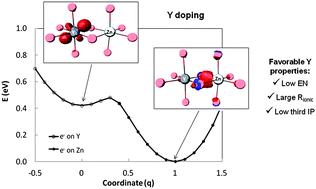Ab initio study of electron and hole transport in pure and doped MnO and MnO:ZnO alloy†
Abstract
Rationally engineering photocatalytic devices that power

* Corresponding authors
a Department of Chemistry, Princeton University, Princeton, NJ 08544, USA
b
Department of Mechanical and Aerospace Engineering, Program in Applied and Computational Mathematics, and Andlinger Center for Energy and the Environment, Princeton University, Princeton, NJ 08544-5263, USA
E-mail:
eac@princeton.edu
Fax: +1 609 258 5877
Rationally engineering photocatalytic devices that power

 Please wait while we load your content...
Something went wrong. Try again?
Please wait while we load your content...
Something went wrong. Try again?
D. K. Kanan and E. A. Carter, J. Mater. Chem. A, 2013, 1, 9246 DOI: 10.1039/C3TA11265A
To request permission to reproduce material from this article, please go to the Copyright Clearance Center request page.
If you are an author contributing to an RSC publication, you do not need to request permission provided correct acknowledgement is given.
If you are the author of this article, you do not need to request permission to reproduce figures and diagrams provided correct acknowledgement is given. If you want to reproduce the whole article in a third-party publication (excluding your thesis/dissertation for which permission is not required) please go to the Copyright Clearance Center request page.
Read more about how to correctly acknowledge RSC content.
 Fetching data from CrossRef.
Fetching data from CrossRef.
This may take some time to load.
Loading related content
